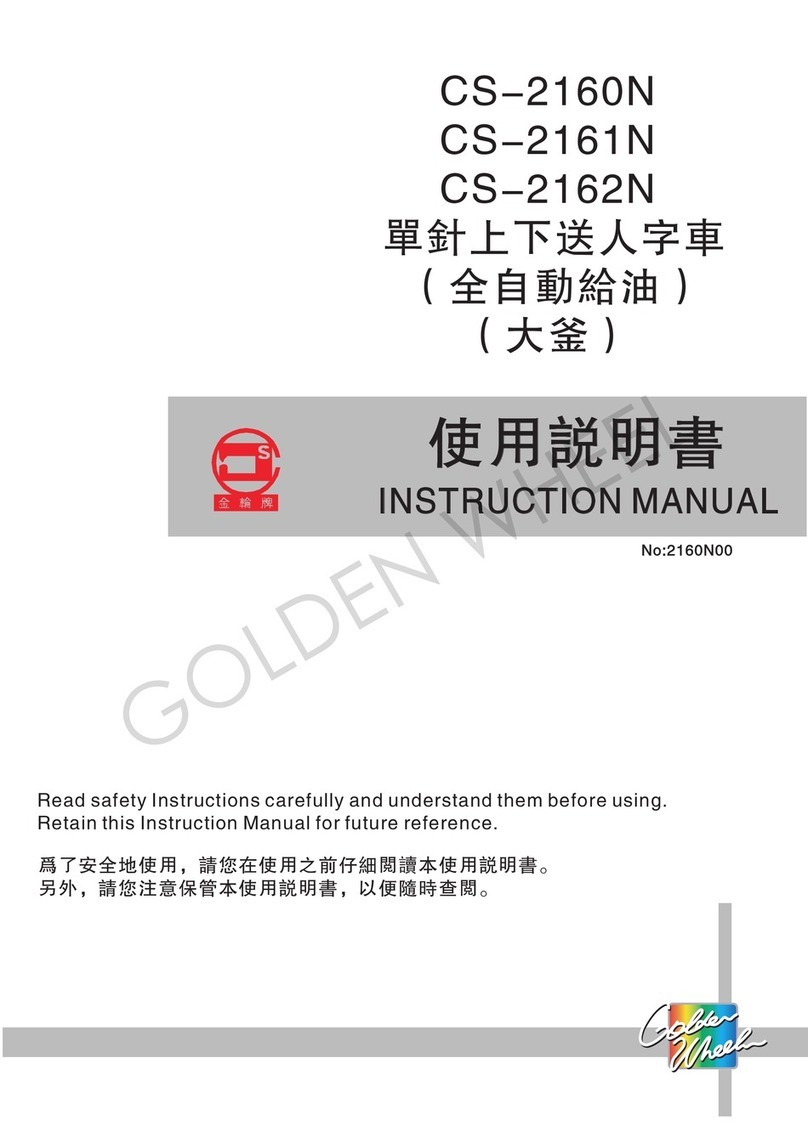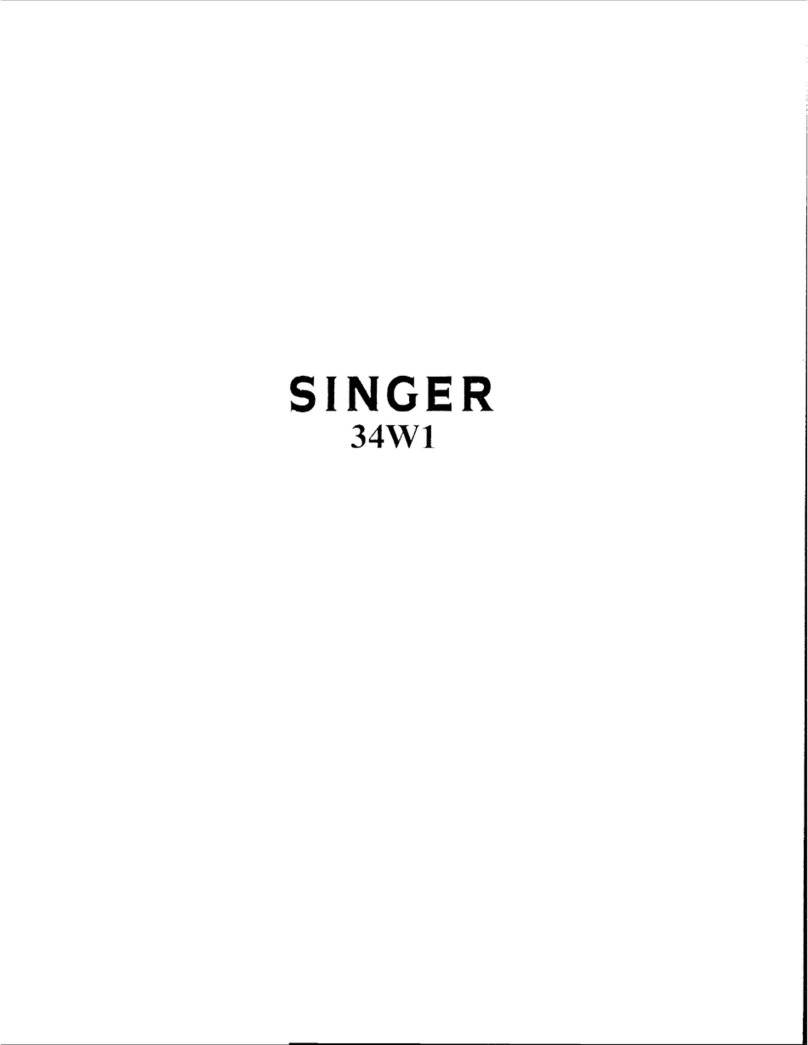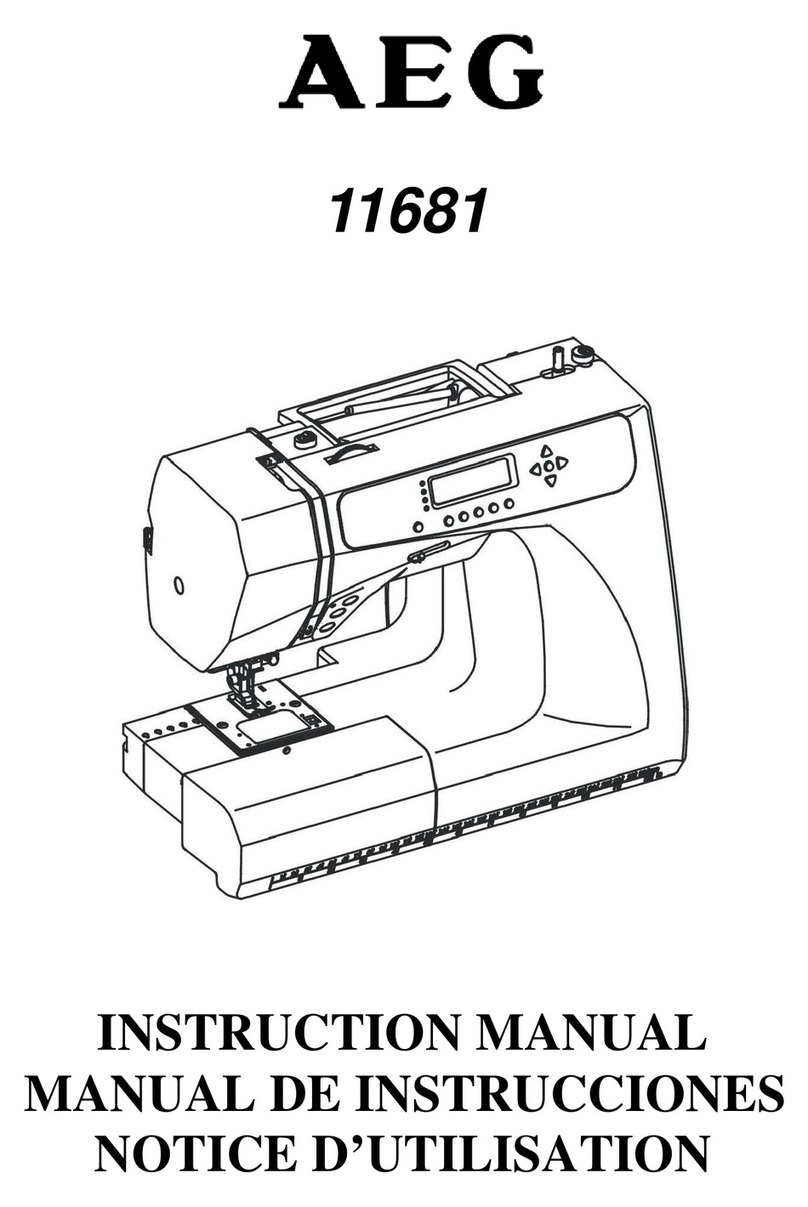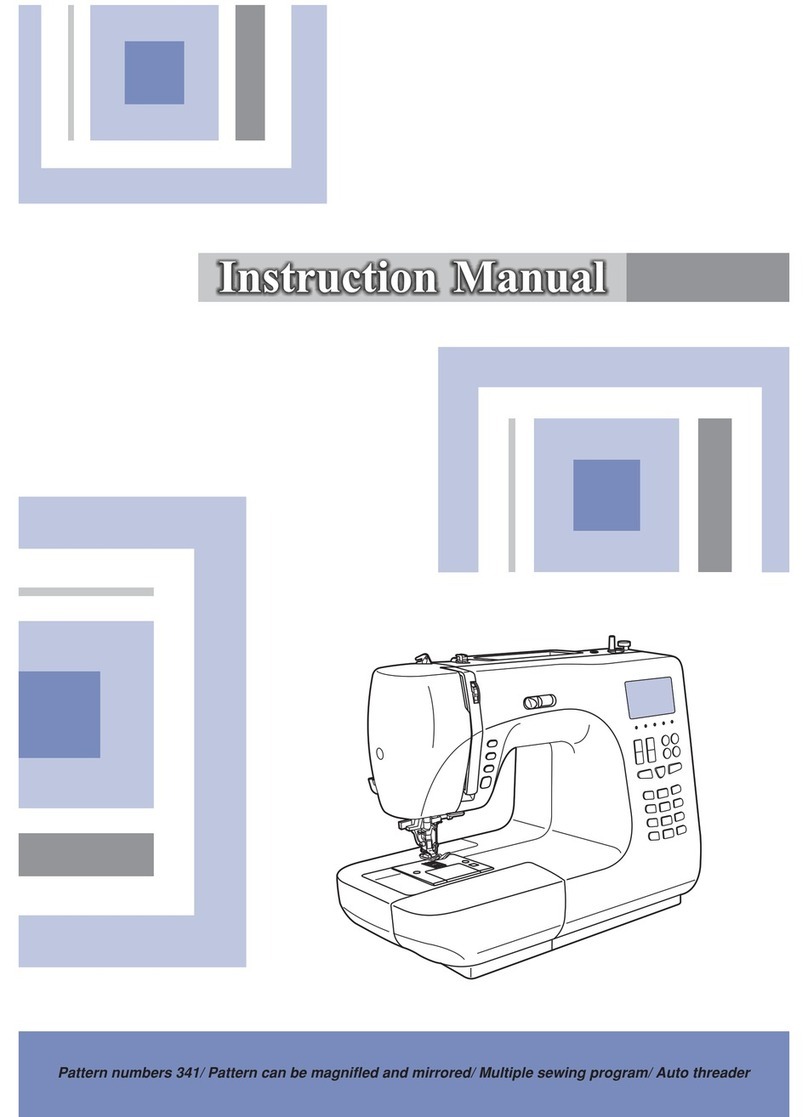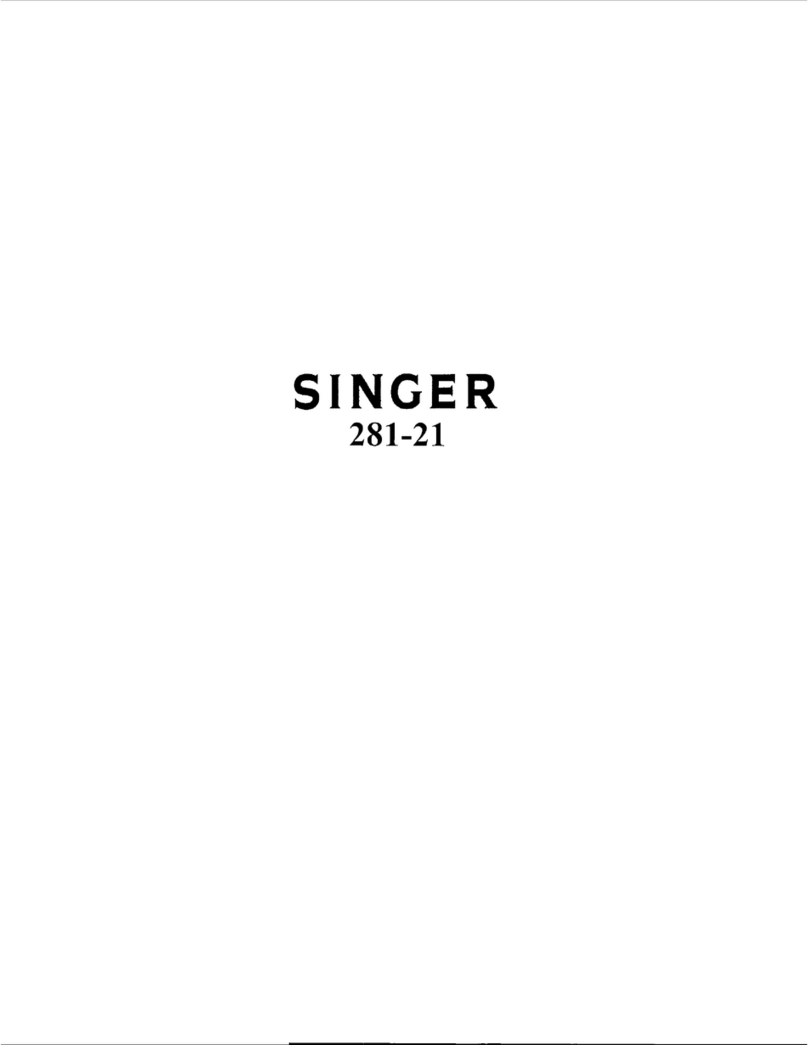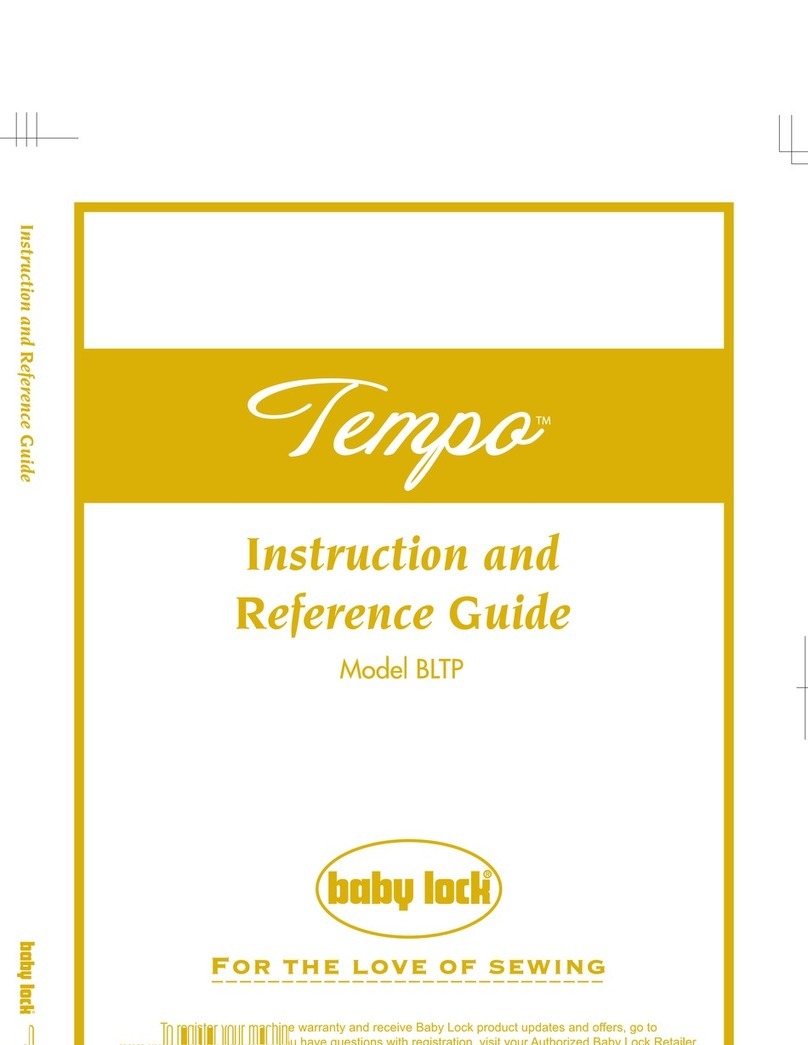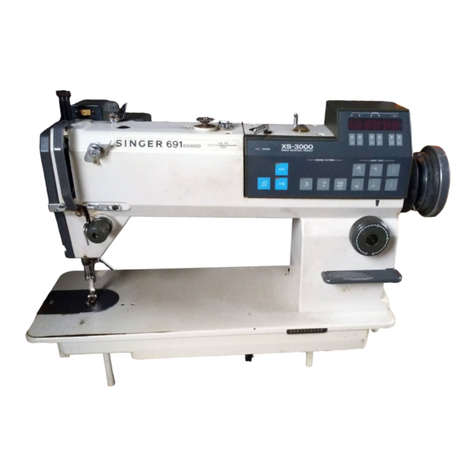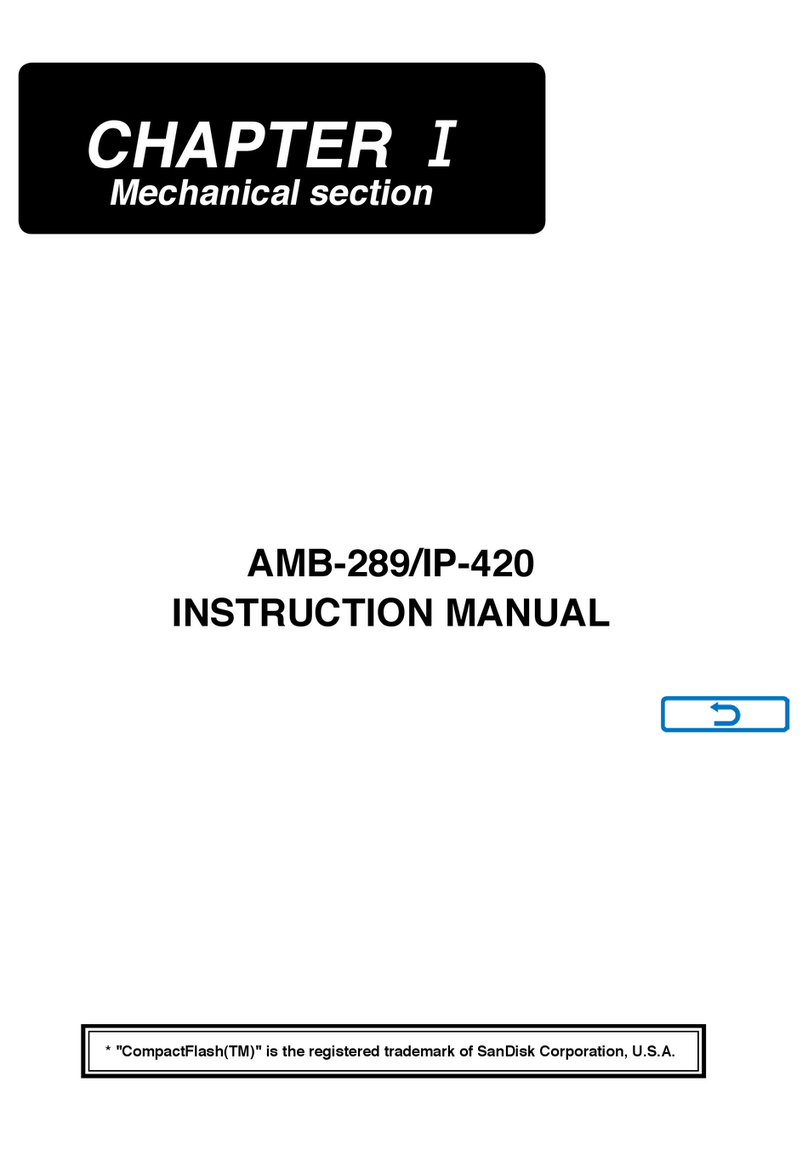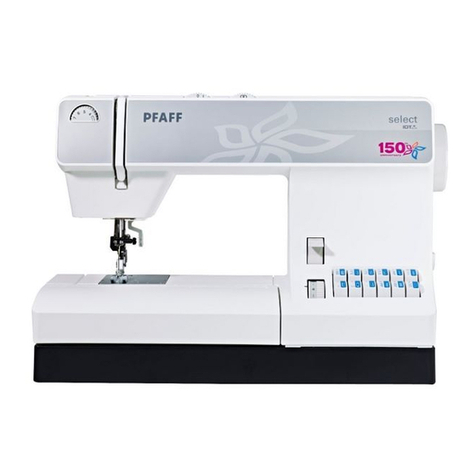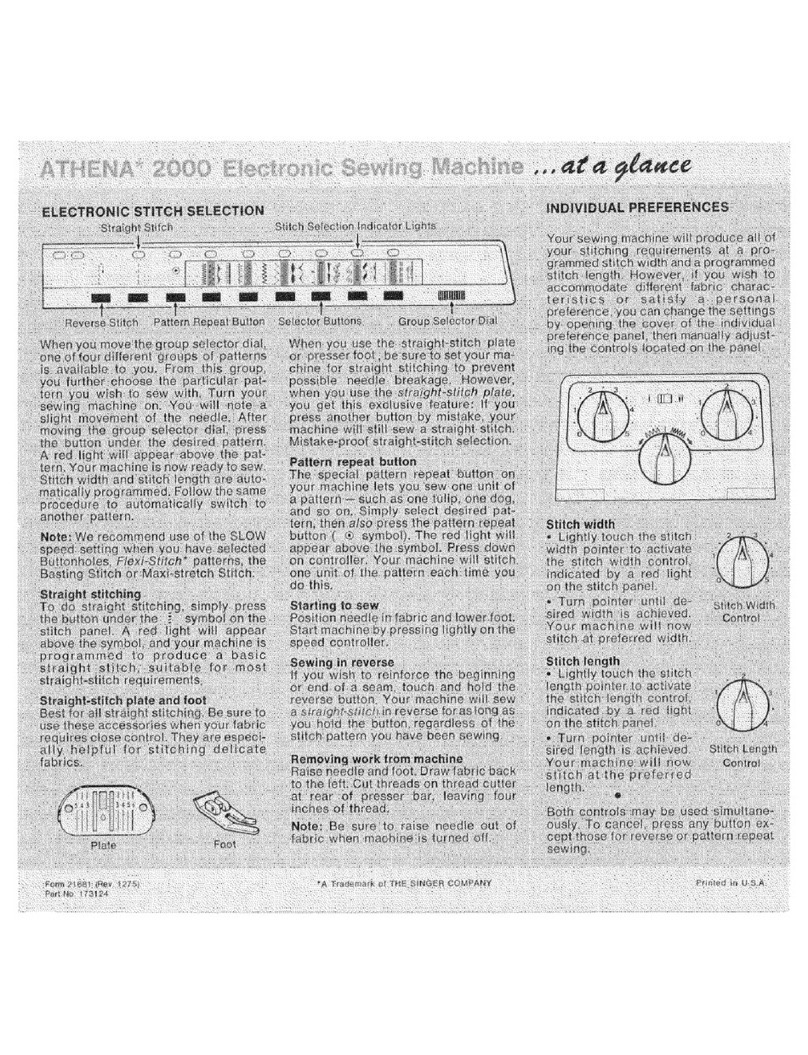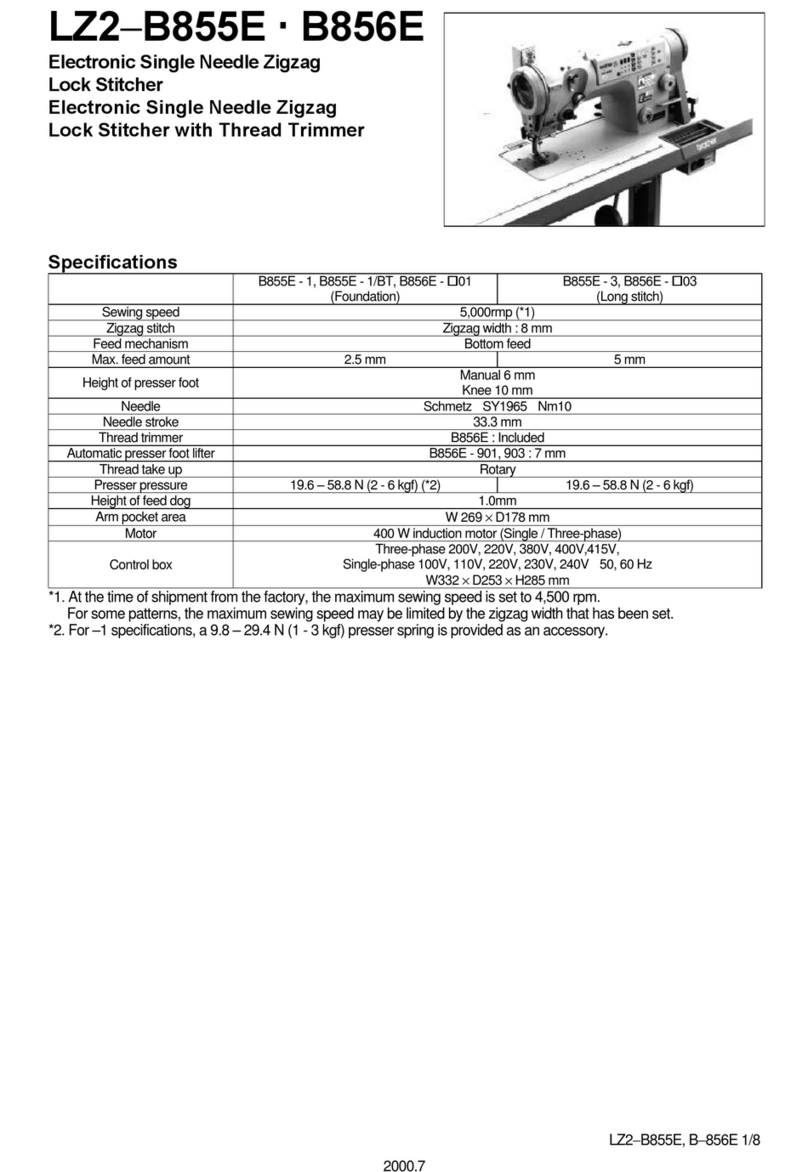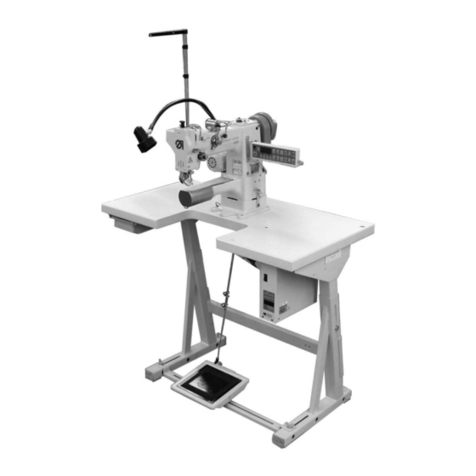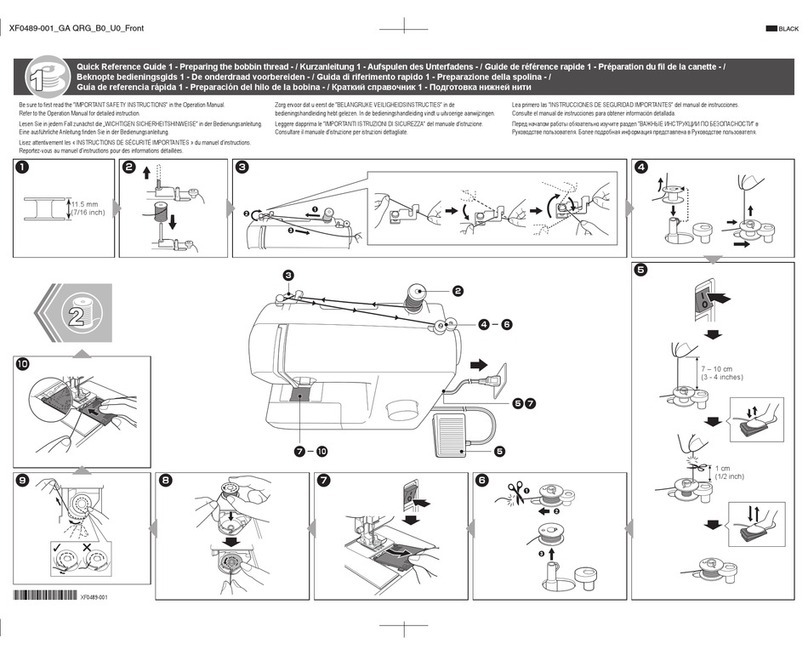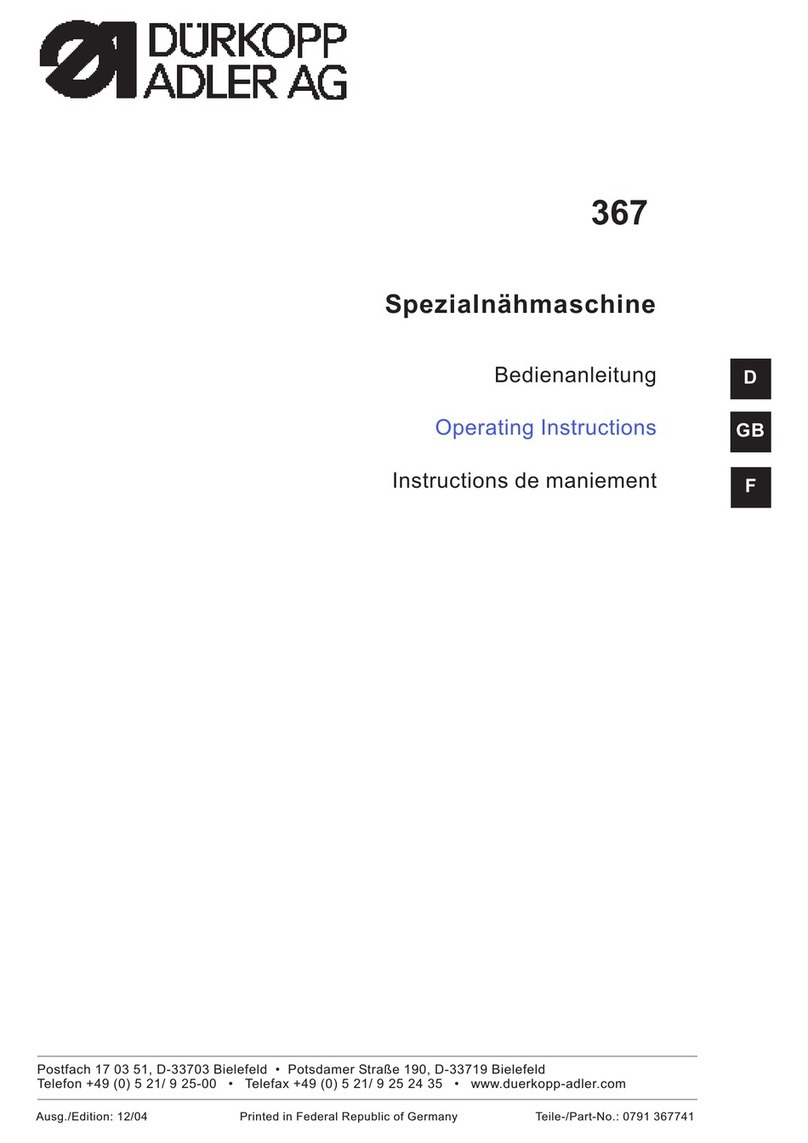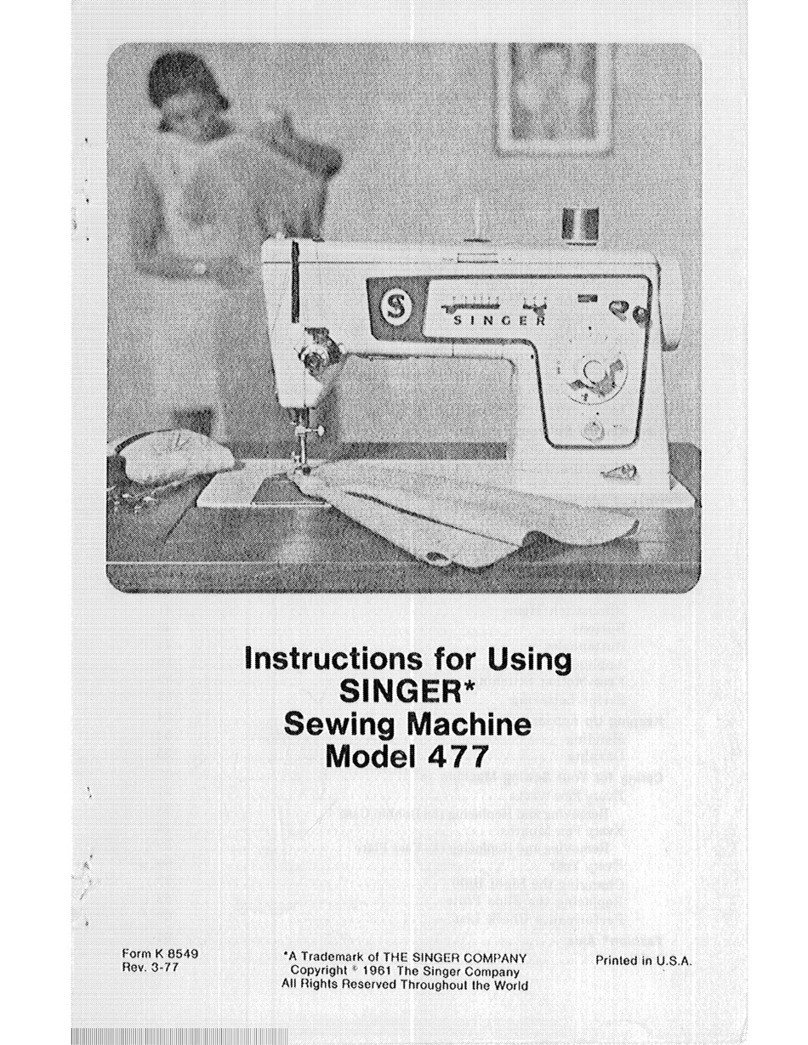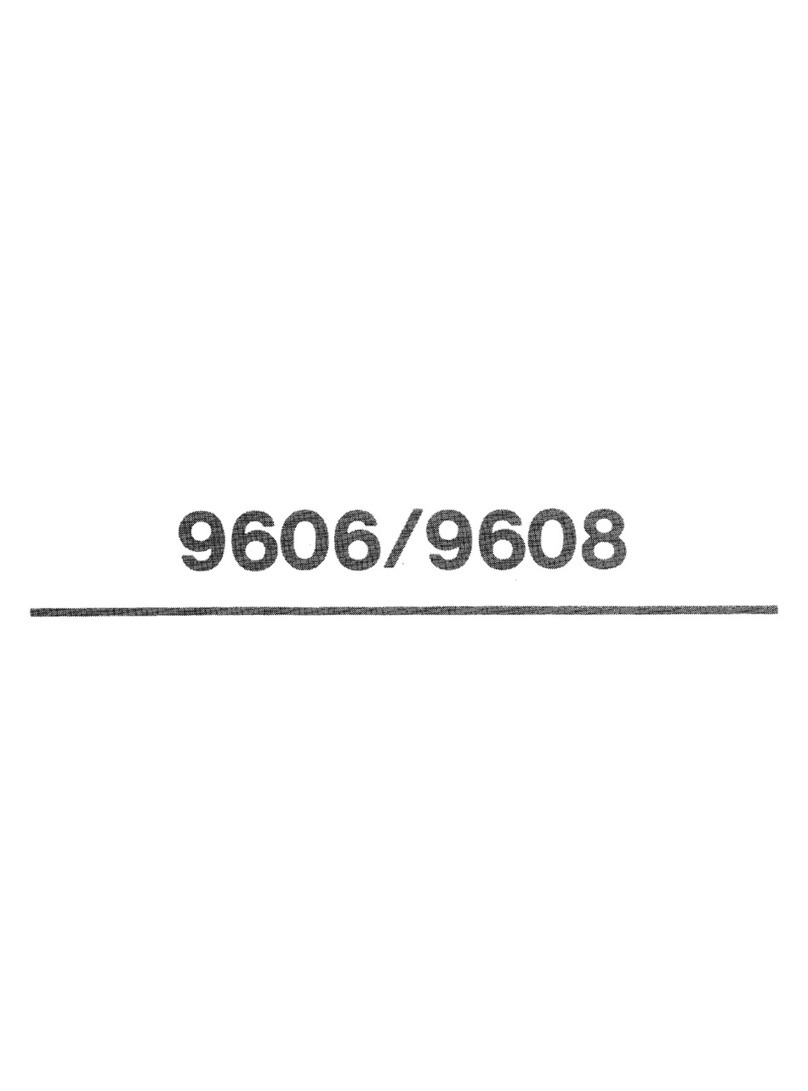SewMighty Mighty Mini User manual

OPERATION MANUAL
(Please read manual carefully before using the SewMighty™)
Mighty Mini Sewing Machine
www.sewmighty.com

Congratulations on your new purchase of the
SewMighty®Mighty Mini Sewing Machine!
Sewing for all your personal needs has never been easier. Mending or creating
masterpieces for yourself and as memorable gifts isn't wishful thinking anymore.
You can do it all with the easy-to-use, lightweight SewMighty®.
Now you can make repairs to clothing, curtains, bedding -- virtually all the fabric
items in your home.
Don't throw it away! You can mend it 1-2-3! Save a lot of cash and have a lot of
fun doing it. It is so satisfying when you can say "I did it myself".
See more Tips & Ideas on pages 10 & 11.
TABLE OF CONTENTS
Safety & Precautions...................................... 1
Parts & Accessories....................................... 2
Parts & Accessories List................................ 3
Before Sewing & Start to Sew........................ 4
Start to Sew (cont’d) & Finish Sewing.......... 5
Threading the Machine................................... 6
Threading the Machine (cont’d)..................... 7
Tension Adjustment........................................ 8
Needle Replacement & Winding the Bobbin. 9
Creative Tips & Ideas..................................... 10
Creative Tips & Ideas..................................... 11
Troubleshooting............................................. 12

1
SAFETY & PRECAUTIONS
IMPORTANT: THE POWER ADAPTER & BATTERIES CANNOT BE USED AT
THE SAME TIME. THERE CANNOT BE ANY BATTERIES IN THE SewMighty®,
IF USING THE POWER ADAPTER. THIS WILL DAMAGE THE SewMighty®.
** REMOVE ALL BATTERIES WHEN USING POWER ADAPTER. **
Remove batteries when the machine is not in use for long periods. This saves
battery life and protects the machine. Keep extra batteries on hand so projects will
not be interrupted when batteries need to be replaced.
The SewMighty®is an electrical appliance when used with power adapter. Do not
submerge the unit or any other parts in water. Do not operate the sewing machine
with wet hands, without shoes, or while standing in water or on a wet surface when
using the Power Adapter.
Never open the main motor case of the machine. The mechanism has been
factory adjusted.
ALWAYS disconnect or remove power supply, including batteries, when changing
needles or threading the SewMighty®.
Never use with a damaged power cord or plug.
Keep the power cord away from heated surfaces.
Do not close door on cord or pull around sharp edges, this could cause the cord to
become punctured or damaged and could result in injury.
Do not unplug by pulling or tugging on the cord. Grasp the plug with dry hands to
remove the plug from the outlet.
Always check the threading of the lock-stitch before beginning to sew a seam.
Improper threading, or placement of the bobbin in the case, will result in damage
to the SewMighty®.
Do not pull on fabric as you sew, Gently guide only. Pulling could break the
needle and result in damage to the SewMighty®.
The SewMighty®is not a toy. Use of the SewMighty®with children MUST be
supervised by an adult.
Do not change needles or thread the SewMighty®while unit is on. DO NOT touch
needles before you turn off the power.
Do not sew clothing while it is on your body.
Use only the power adapter recommended (Sold Separately) by the manufacturer
Any other adapter may cause injury or damage to the machine.
Never leave the swing machine unattended while plugged in. Turn switch off and
unplug the cord when not in use.

PARTS & ACCESSORIES
BACK OF UNIT
ACCESSORIES
Needle Needle
Threader
Power
Adapter
(4) Metal
Bobbins
Foot Pedal
Tape Measure
Large
Extension Table
2

3
PARTS LIST
A- ON/OFF Switch
B- Battery Compartment (bottom of unit)
C- Thread Spindle
D- Take-up Lever
E- Thread Spool
F- Presser Foot
G- Presser Foot Lever
H- Thread Gap
I- Bobbin Compartment
J- Bobbin Holder
K- Hand Wheel
L- Speed Control
M- Foot Pedal Jack
N- Tension Adjusting Screw
O- Needle Clamp Screw
P- Needle Clamp
Q- Adjusting Screw
R- Needle
S- Bobbin
T- Bobbin Winder Spool
U- Bobbin Spindle
V- Bobbin Holder
W- LED Light
X- ON/OFF Light
Y- Thread Cutter
Z- Power Adapter DC Jack
ACCESSORIES LIST
(1) Foot Pedal controller
(1) Power Adapter DC
(1) Needle
(1) Needle Threader
(1) Large Extension Table
(4) Metal Bobbins
(1) 60” Tape Measure

BEFORE SEWING
(1) Check if the needle thread and bobbin thread are available.
The machine must be threaded correctly (Both needle thread and
bobbin thread, refer to Pages 6-7 "Threading the Machine"). A
wrong threading will cause skipped stitches (cannot sew), thread
breaking and irregular stitches.
(2) Check if the needle is threaded from left to right (the right side
is the Hand-wheel) refer to Pages 6-7 "Threading the Machine"
(3) Check if the needle is inserted in correct position (its flat side
towards the machine, refer to Page 9 "Needle Replacement").
(4) Check if the machine power is "OFF" (Automatic Sewing
Button), if not, turn the power switch OFF. IMPORTANT.
(5) Insert the Power Adapter into the machine socket on back of
machine
** IMPORTANT **
Note: AC Power Adapter and batteries CANNOT be
used at the same time.
(6) Insert the Power Adapter plug into the wall outlet.
(7) Insert the Foot Pedal into jack on back of machine, if you need
it.
** Note: Foot Pedal and On/Off Button (automatic) cannot be
used at the same time. **
START TO SEW
(1) Raise up the presser foot by pulling its lever, raise the needle
up to its highest position by turning the Hand Wheel towards you.
(2) Pull at least 10 cm (4 inches) needle thread from needle. Put
the needle thread and bobbin thread under and behind the press-
er foot.
(3) Insert the fabric under the presser foot.
(4) Lay down presser foot.
4

5
FINISH SEWING
1. After your finished sewing, raise up the Presser Foot, and raise
up the needle to its highest position by turning the Hand-wheel.
2. Pull the fabric gently, DO NOT pull it by force, otherwise it will
warp or break the needle. You can turn the Hand-wheel up and
down during pulling the fabric. If the threads are too tight, pull
some needle thread from theTake-up Lever.
3. Cut the threads by using its Cutter on the machine or scissors.
4. Remember to unplug the machine from electrical outlet, when
you do not need to use it again.
START TO SEW
(1) Raise up the presser foot by pulling its lever, raise the needle
up to its highest position by turning the Hand Wheel towards you.
(2) Pull at least 10 cm (4 inches) needle thread from needle. Put
the needle thread and bobbin thread under and behind the press-
er foot.
(3) Insert the fabric under the presser foot.
(4) Lay down presser foot.
(5) Select sewing mode------ Foot Pedal, or On/Off Button (auto-
matic). Select the speed (slow or fast) according your need.
IMPORTANT: Foot Pedal and On/Off Button cannot be used
at the same time.
(6) Sew some stitches on the fabric manually by turning
Hand-wheel towards you to stabilize the stitches. IMPORTANT!
(7) Turn it on by Auto-sewing button or Foot Pedal to sew.
Note: It is suggested that you try some sewing on a test
fabric to adjust the thread's tension accordingly. (Page.5
"Adjust Thread Tension")
(8)Switch off the machine immediately when encountering thread
breaking or jamming.

THREADING THE MACHINE
1. Set the Needle Thread ( Upper Thread )
Please strictly follow the right order to thread the needle
thread as illustrated.
Start from Upper Bobbin (the bobbin must be placed clockwise)
the thread must go through:
①Eyelet
②Tension Screw (The thread must be placed between the
clamps, NOT in the spring)
③Eyelet
④Hole of theTakeup Lever
⑤Eyelet
⑥Needle Bar
⑦Needle IMPORTANT: thread the needle from left to
right. You can use the Needle Threader (included in
accessories) to thread the needle.
2. Draw up the Bottom Bobbin Thread
Before drawing up the bottom bobbin thread, pull out at least
10cm (4 inches) needle thread from the needle.
(1) Slide outward the bottom bobbin cover plate, and place the
bobbin in the bobbin holder. IMPORTANT: the bobbin should be
positioned clockwise. (Pic. 1)
(2) Pull about 7cm (3 inches) thread from bobbin and lay it on the
slot.
(3) Lay down Presser Foot, hold the needle thread lightly with
your left hand.
(4) Turn the Hand-wheel slowly towards you one complete round.
Draw up the bobbin thread by pulling up the needle thread with
you left hand as illustrated. (Pic.2)
6

Pic. 1 Pic. 2 Pic. 3
(5) You can either grab the bobbin thread with your hand or hook it
with a scissor. Seal the bottom bobbin with its cover plate. (You
can also seal it after the bobbin is positioned)
(6) Raise up the presser foot, put the needle thread and bobbin
thread under and behind the presser foot (pic.3)
**IMPORTANT**
Remember to lay down presser foot again and sew some
stitches on the fabric manually by turning Hand-wheel
towards you, before turning on the machine to sew.
7

8
TENSION ADJUSTMENT
Thread Tension: The thread tension should be adjusted accord-
ing to sewing materials, layers of fabric. To tighten, turn Tension
Screw clockwise; and loosen the tension by turning counter-
clockwise.
(1) As Fig. A shown, it is the normal stitches, which the top
thread and Bottom thread are neat and uniform. The tension is
just right!
(2) As Fig. B shown, if the bottom threading looks like a straight
line, which indicates the top thread is too loose. Please turn the
Tension Screw clockwise to increase pressure (until it is neither
too tight nor too loose).
(3) As Fig. C shown, when the top thread looks like a straight
line, it indicates the thread is too tight. Please slowly turn the
Tension Screw counter-clockwise to reduce the pressure until
the stitch is back to normal.
Note: If the fabric is too thin/ thick/ slippery/ hard, it will
cause: skipped stitches, thread breaking, pucker or forming
loops, and tension adjustment cannot help that, you should
change the fabric. Please kindly note that this is just a small
domestic sewing machine.
Applicable fabrics: Jean, Cotton fabric, Felt, Polypropylene
cloth, thin Leather, etc.
Top Thread
Cloth
Bottom Thread
Fig. A
Fig. B
Fig. C

WINDING THE BOBBIN
Note: Remove the fabric and the thread from Take-up lever, before
winding the bobbin
1. Pull out the thread spindle (on the top of the machine )then
put the spool on it. (Pic.l)
2. Press the winding pole of Hand-wheel and turn it counter
clockwise, the pole will automatically pop up. (pic.2)
3. Insert the empty bobbin in the winding pole.
4. Pull a thread from spool and wind it on the empty bobbin for
4-5 circles, then turn on the machine to begin the automatic
winding. Guide the winding with side-to-side movement to
feed the bobbin evenly.
5. After winding, you can restore the winding pole.
9
NEEDLE REPLACEMENT
Caution: Make sure to turn off the machine and plug out the adapter
before replacing the needle.
(1) Raise the needle to its highest position by turning the
hand-wheel and lay down the presser foot.
(2) Loosen the needle clamp screw by turning it
counterclockwise, and remove the needle from the clamp.
(3) Insert a new needle into the needle clamp with its flat side
towards the hand-wheel, which is very important
(Refer to Pic.1).
(4) When inserting the needle into the needle clamp, push it up
against the top, then tighten the needle clamp screw firmly.
DONE!

10
CREATIVE TIPS & IDEAS
Recycle clothing by tailoring it to fit growing children. It doesn't have
to look like ill-fitting hand-me-downs anymore! Also, add an appliqué
or decorative ribbon to give it a new look.
Make your own shower curtains, window curtains and bath sink
skirts out of on-sale sheets. It's a lot of fabric for little money. And
you can find prints that are absolutely perfect for a designer bath-
room.
Also use sheets for great custom bedroom ensembles. Sew a cover
for a comforter (new or recycled) out of oversized sheets to create a
new look. Then make easy pillow shams to match. Sheets are
always on sale, and naturally have the most up-to-date designer
looks for the bedroom. Get an extra set of sheets for the bed,
and you have an ensemble that would cost hundreds of dollars.
Make your own tablecloths and napkins. It's easy and inexpensive,
and you can make them to fit all the occasions of the year. Get
creative. Christmas, Valentine's Day, Easter St. Patrick's Day, Fourth
of July, Halloween, Thanksgiving, you can have inexpensive table
settings for them all. Even birthdays and anniversaries.
Most fabric stores carry a wide range of printed fabrics with all these
themes just cut and sew hems around the edges. It's hostess magic
in minutes!
Get on the mailing list of your local fabric shop. You'll get advance
notice on all the fabric sales so you can get the best selection and
the lowest prices.
Check tag sales for drapes or curtains. You can alter drapes worth
hundreds of dollars that can be purchased for pocket change.
Watch for pattern sales. Look through pattern books tor ideas on
easy-to-make projects that impress and delight.
Most of all...Have Fun!

11
CREATIVE TIPS & IDEAS
Some of the Great Ways to Save Money and Avoid Costly Repairs
or Replacements:
• Fix rips in children's clothing
• Let down hems on skirts, dresses and pants for growing kids
• Take in clothing after weight loss
• Let out clothing after weight gain
• Raise and lower dress hems to keep up with fashion
• Mend torn bed sheets
• Alter curtains to fit your windows
Some of the Things You Can Make with your SewMighty®
to Get Decorator Looks for a Fraction of the Cost:
• Throw pillows
• Slip covers
• Duvet covers
• Bedspreads
• Pillow Shams
• Curtains
• Table linens
Quick and Easy Gifts
from your SewMighty®:
• Blankets and quilts
• Lively fabric liners for inexpensive store-bought baskets
• Tea cozy
• Car blankets and comfort pillows
• Tote bags in fun or beautiful fabrics
• Men's ties with fabric in his favorite colors and themes
• Doll clothes and layettes
• Teddy bears and stuffed toy

12
TROUBLESHOOTING
Table of contents

